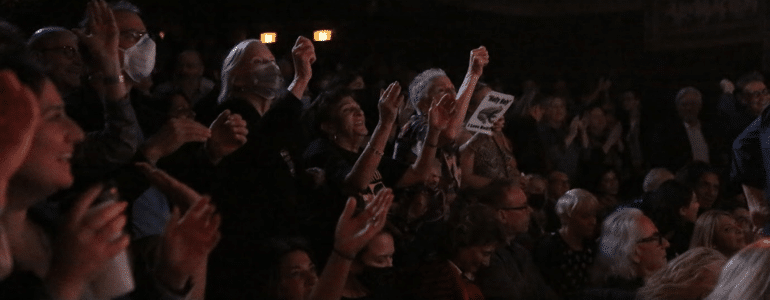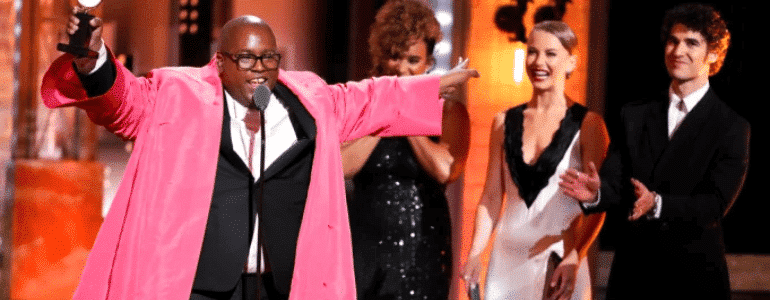Who came to Broadway this year?
It seems like just yesterday we posted The Broadway League’s summary of “Who Came To Broadway” in the 2007-2008 season.
Well, it’s that time again!
Just in time for the holidays, it’s the Demographics of the Broadway Audience Report for 2008-2009! As I did last year, I’ll give you the Cliff’s Notes version of the document here, but try and get your hands on a copy of the complete report if you can. Because despite what we all thought in high school, the Cliff’s Notes version ain’t as educational as the real thing.
EXCERPTS FROM THE BROADWAY LEAGUE STUDY OF THE DEMOGRAPHICS OF THE BROADWAY AUDIENCE FOR THE 2008-2009 SEASON
Demographics
- In the 2008-2009 season, approximately 63% of all Broadway tickets were purchased by tourists.
- International visitors accounted for 21% of all Broadway admissions, the highest proportion in recorded history.
- Sixty-six percent of the audiences were female. This reflects the trend of the past few decades.
- The average age of the Broadway theatregoer was 42.2 years.
- The percentage of theatregoers under age 18 dropped slightly from the past few years; however, those aged 25-34 accounted for 16% of all tickets sold, a higher percentage than it has been since the 1999-2000 season.
- Seventy-four percent of all tickets were purchased by Caucasian theatregoers. Although still mostly homogeneous, audiences have become slightly more diverse in the past decade.
- Broadway theatregoers were a very well-educated group. Of theatregoers over 25 years old, 73% had completed college and 36% had earned a graduate degree.
- Broadway theatregoers were also quite affluent compared to the general United States population, reporting an annual household income of $195,700.
Ticket Purchasing Habits
- The average Broadway theatregoer reported attending 4.2 shows in the previous 12 months. The group of devoted fans who attended 15 or more performances comprised only 5% of the audience, but accounted for 31% of all tickets sold (3.7 million admissions).
- Playgoers tended to be more frequent theatregoers than musical attendees. The typical straight play attendee saw eight shows in the past year; the musical attendee, four.
- The Internet was by far the most popular way to buy Broadway tickets. In fact, the reported use of the Internet to purchase tickets has grown from 7% in the 1999-2000 season to 40% this season.
- In the 2008-2009 season, 34% of theatregoers bought their tickets more than one month prior to the show, compared to 39% the previous season, but up from 32% the three prior seasons.
- More than half the time, women were the ones who decided to attend the show. Since 66% of all audiences were female, women were the “decision makers” 70% of the time.
- Forty-seven percent of theatregoers at musicals said that personal recommendation was the most influential factor in deciding to attend the show. On the other hand, critics’ reviews were the most influential factor for play audiences, cited by one-third of respondents.
- Twenty percent of respondents overall cited some kind of critical review as a deciding factor, down from 27% in the 2007-2008 season. Reviews were much more important to playgoers than to musical attendees.
- Overall, the most effective types of advertising were reported to be the Internet (7.5%), television (6.2%) and print (5.2%). The New York Times was still the most common advertising source recognized by theatregoers; however, it was less frequently cited this season, compared to last season.
- Approximately three quarters of the Broadway audience said that some kind of incentive (discounts, freebies, add-ons) would encourage them to attend shows more often.
Interesting stuff as always, right?
Just remember. Data is like a pile of bricks. It can be the foundation of something great, but only if you do something with it.
Podcasting
Ken created one of the first Broadway podcasts, recording over 250 episodes over 7 years. It features interviews with A-listers in the theater about how they “made it”, including 2 Pulitzer Prize Winners, 7 Academy Award Winners and 76 Tony Award winners. Notable guests include Pasek & Paul, Kenny Leon, Lynn Ahrens and more.













